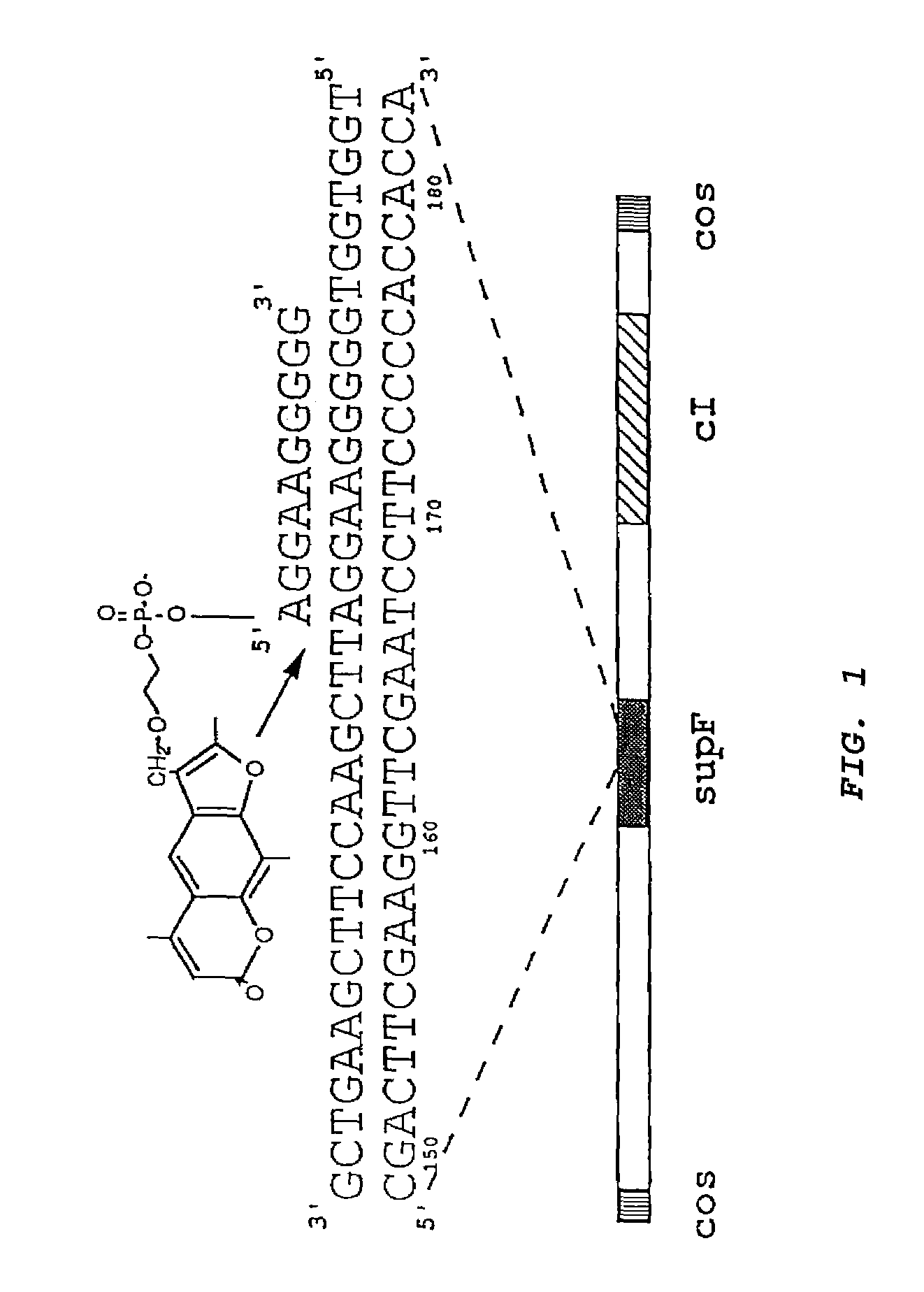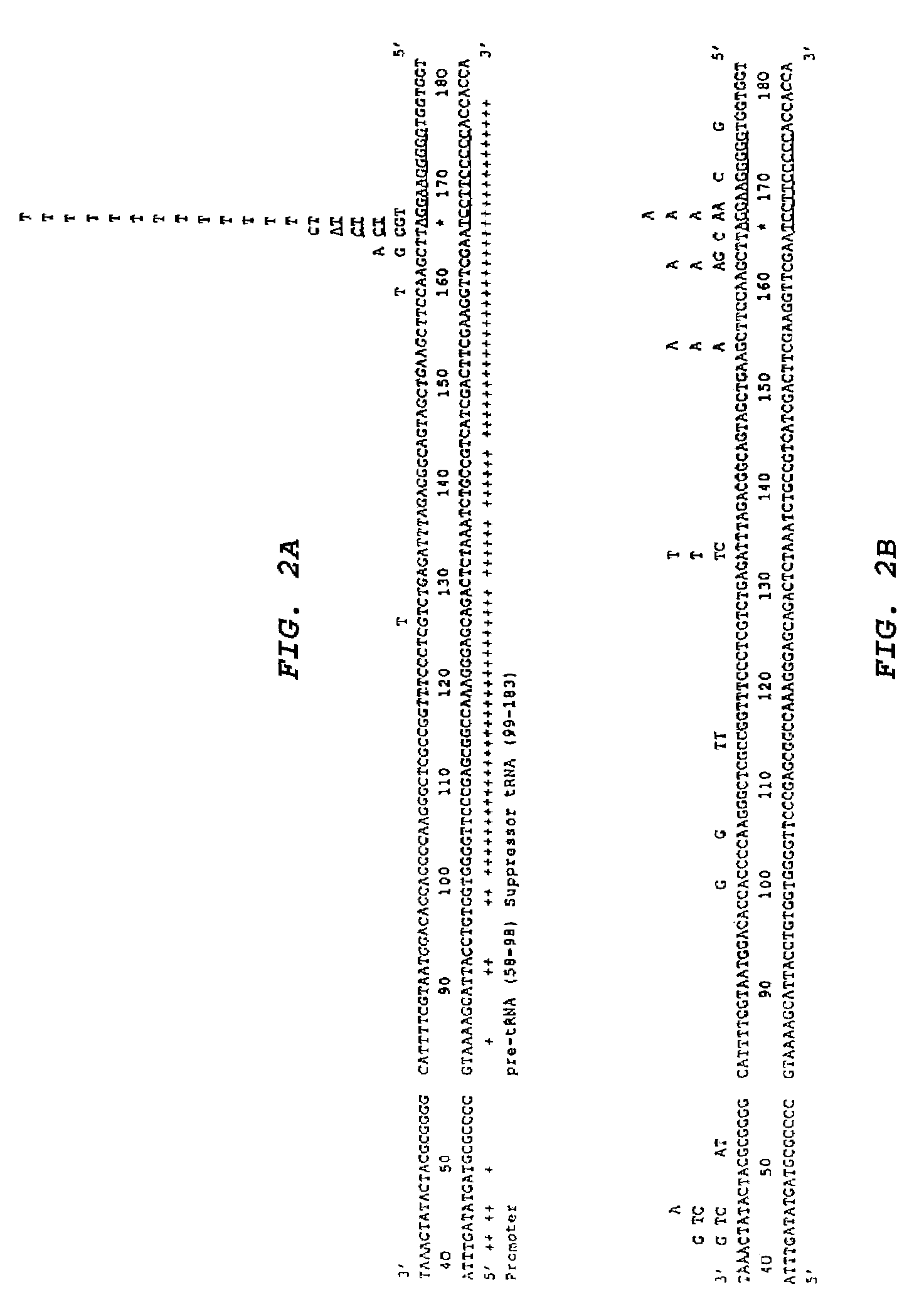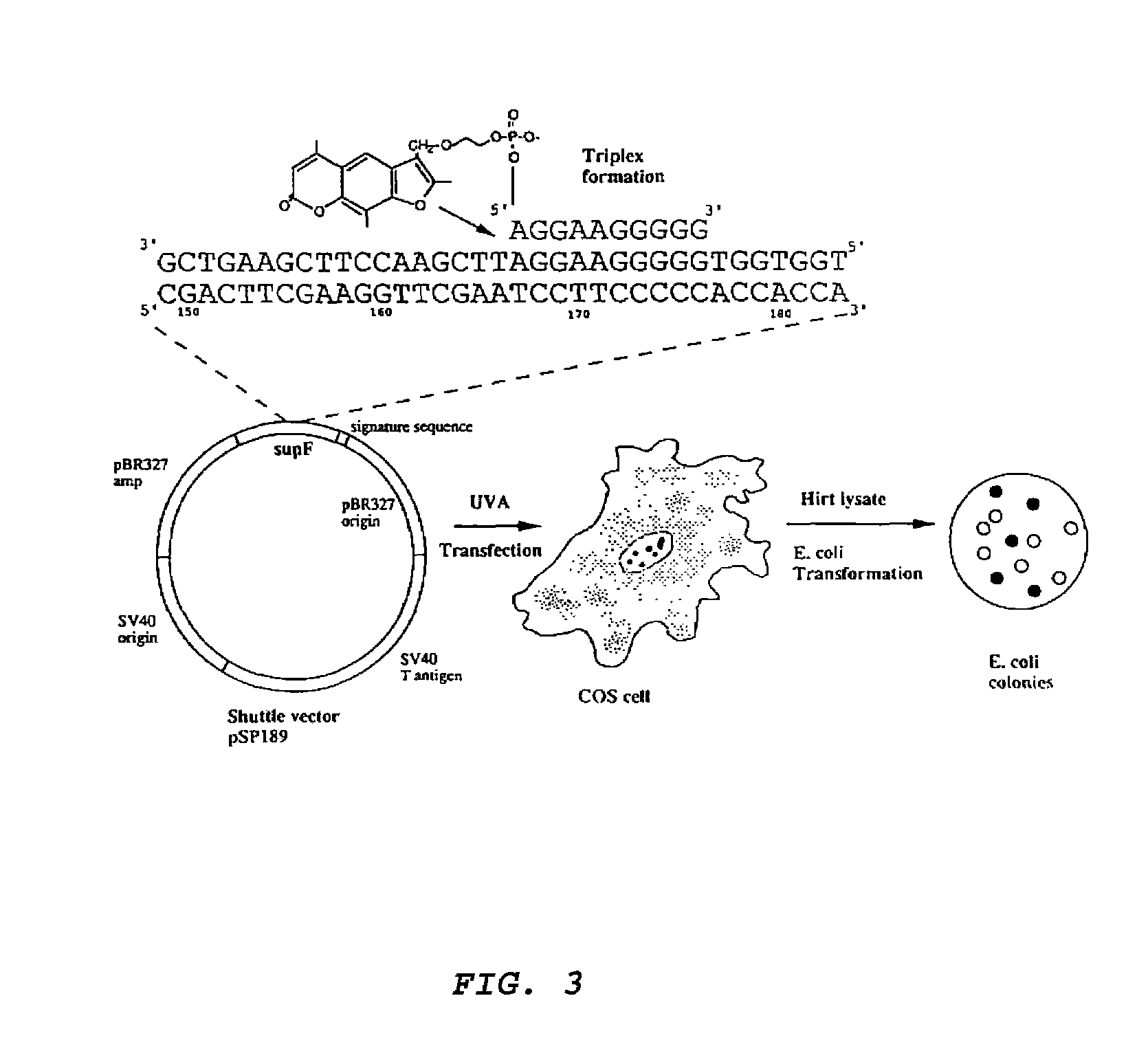Chemically modified oligonucleotide for site-directed mutagenesis
a mutagenesis and site-directed technology, applied in the field of genetics, can solve the problems of complex delivery system and low vivo efficiency, and achieve the effect of reducing the uncontrolled proliferation of cancer cells
- Summary
- Abstract
- Description
- Claims
- Application Information
AI Technical Summary
Benefits of technology
Problems solved by technology
Method used
Image
Examples
example 1
Site-Specific, Targeted Mutagenesis of the SupF Gene of the Lambda Phage Genome
[0036]A triplex-forming oligonucleotide linked to psoralen at its 5′ end was used to achieve site-specific, targeted mutagenesis in a specific gene in an intact, double-stranded lambda phage genome. Psoralen-linked oligonucleotides were obtained from either Oligos Etc. (Wilsonville, Oreg.) or M. Talmor (Yale University, New Haven, Conn.) with materials from Glen Research (Sterling, Va.). The psoralen was incorporated in the oligonucleotide synthesis as a psoralen phosphoramidite in accordance with the instructions provided by supplier.
[0037]Site-specific triplex formation was designed to deliver the psoralen to the targeted site in the lambda DNA, and UVA irradiation was used to activate the psoralen to form adducts and thereby induce mutations at that site. Sequence analysis of mutations in the target gene showed that almost all were in the targeted region, and 56% were found to be the same T:A to A:T tr...
example 2
Sequence Analysis of Mutants Obtained by Targeted Mutagenesis Using the Triplex-Forming Oligonucleotide
[0050]To obtain direct evidence for targeted mutagenesis, a series of independent mutants produced in the supF gene of the lambda vector by pso-AG10 and UVA were sequenced. The sequences of 25 such mutants are presented in FIG. 2a. All except one of the 25 mutations produced by pso-AG10 is at or near the targeted T:A base pair at position 167. 56% of the mutations consist of the same T:A to A:T transversion precisely at the targeted base pair (#167), demonstrating the specificity and reproducibility of the targeting by pso-AG10. The A:T base pair at 167 forms a triplet with the 5′ adenine to which the psoralen is tethered in AG10, and so it is the closest base pair to the psoralen. The overwhelming predominance of the T:A to A:T transversion at this site is consistent with the mutagenic action of psoralen, which tends to form adducts at pyrimidines, and especially at thymidines. It...
example 3
Covalent Linkage of Psoralen to an Oligonucleotide
[0054]The mutagen, 5-aminomethyl-8-methoxypsoralen, was covalently linked to an oligonucleotide.
[0055]5-aminomethyl-8-methoxypsoralen (5am8mop, HRI Associates, Emeryville, Calif.) was mixed with the linker, sulfo-m-maleimidobenzoyl-N-hydroxysuccinimide ester (sulfo-MBS, Pierce Chemical Co., Rockville, Ill.) in 0.05 M phosphate buffer, pH 8, with a 5am8mop to sulfo-MBS molar ratio of 1:40. The mixture was stirred at room temperature for 30 minutes while protected from light in accordance with the methods of Liu et al., Biochem. 18:690–697 (1979) and Kitagawa and Ailawa, J. Biochem. 79:233–236 (1976), and the instructions of the Pierce Immunotechnology Catalog and Handbook, 1992–93 edition, pages A16–A17. The initial run was made using 1 ml total volume and 1 mM 5am8mop, with the reaction scaled up and optimized as needed.
[0056]The modified 5am8mop was purified by HPLC using a modification of standard conditions used in the analysis of...
PUM
| Property | Measurement | Unit |
|---|---|---|
| volume | aaaaa | aaaaa |
| irradiance | aaaaa | aaaaa |
| total volume | aaaaa | aaaaa |
Abstract
Description
Claims
Application Information
 Login to View More
Login to View More - R&D
- Intellectual Property
- Life Sciences
- Materials
- Tech Scout
- Unparalleled Data Quality
- Higher Quality Content
- 60% Fewer Hallucinations
Browse by: Latest US Patents, China's latest patents, Technical Efficacy Thesaurus, Application Domain, Technology Topic, Popular Technical Reports.
© 2025 PatSnap. All rights reserved.Legal|Privacy policy|Modern Slavery Act Transparency Statement|Sitemap|About US| Contact US: help@patsnap.com



